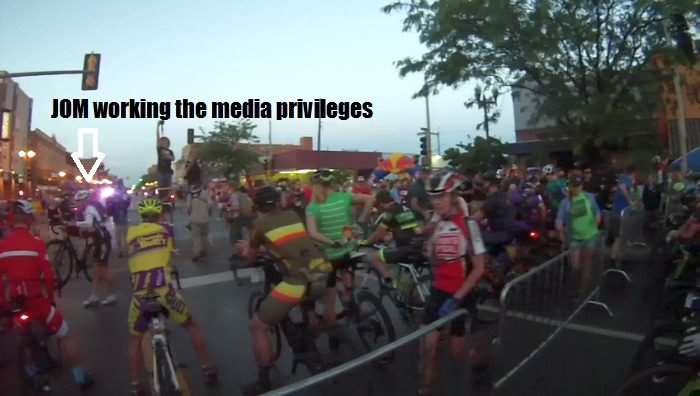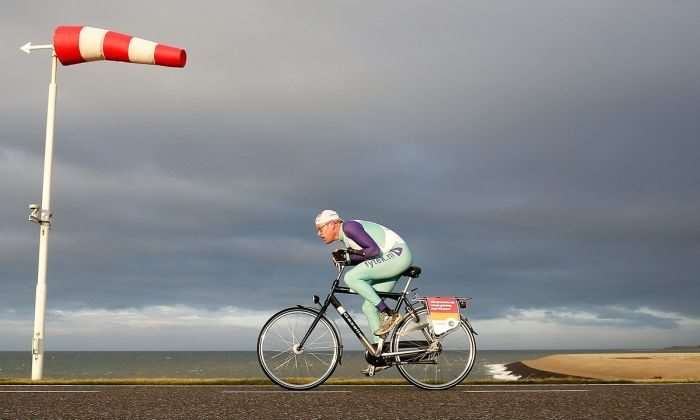
Headwinds
If you’ve spent any amount of time riding around on dirt and gravel roads, either for fun or part of an organised ride or race, you’ll have felt the wind. In your face or pushing you along, the invisible force of the wind can be your friend, or foe.
Pushing into the wind is one of the hardest tasks on a bicycle, and breaking the wind (pardon the pun) accounts for 70% – 90% of a rider’s effort. The rolling resistance of riding dirt and gravel roads is a relatively small fraction of the total. At lower speeds, wind resistance is less relative to the rolling resistance, but is still an order of magnitude more.
Seen most prominently with road cyclists, riding as a group / bunch is advantageous to covering greater distances at a greater speed, when the workload is shared between everyone present. Simply put, a cyclist ahead of you creates a pocket of air behind them as they move forward. If you happen to be riding within the confines of that air pocket, you will expend less energy as you maintain the pace of the rider ahead.
But, you don’t need to be a road cyclist to take advantage of the draft. While drafting is common sense to many cyclists, the finer points of drafting such as pacelines and the associated etiquette aren’t well known to inexperienced riders or those who spend a lot of time riding alone in the woods, especially if that is one’s sole pursuit with an occasional cross over to gravel – no offense intended to MTB’ers of all levels!
Pacelines
Before we discuss paceline etiquette, we’ll cover the different types of paceline riding:
- Single paceline is what most cyclists do on a casual ride. One cyclist will sit at the head of a line of riders for a determined amount of time, or for as long as they feel comfortable holding their pace. Once their turn is finished, they will pull off the front and drift to the rear of the paceline. We’ve seen this type of paceline riding used a lot at gravel races. A single paceline can be angled ala Echelon style to deal with crosswinds.
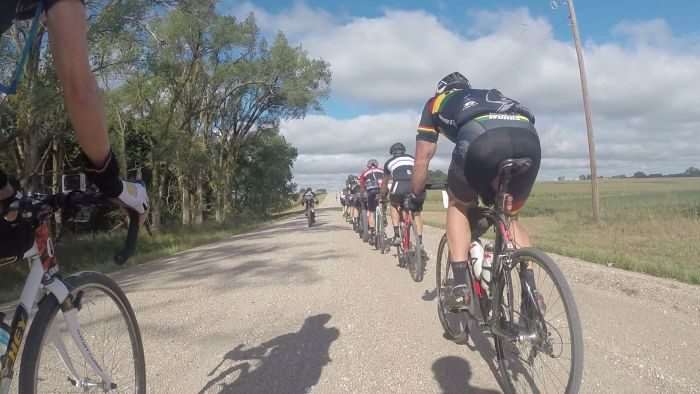
- Double paceline is two single pacelines side by side. Generally the two leading riders pull off the front together but in opposite directions when their turn at the head of the group is finished. Then, the two riders will drift to the rear of the paceline. This type of paceline riding is used mostly by road cyclists, and is great for tempo riding / holding a conversation while riding.
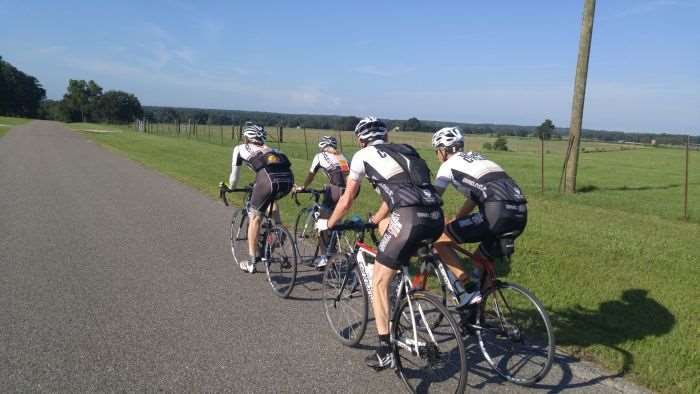
- Rotating paceline in the company of experienced cyclists is akin to poetry in motion. There are two lines of riders, with a faster line of riders on one side (advancing), and a slower line of riders on the other (retreating). Generally, the retreating line is on whichever side the wind is coming from. For a rotating paceline to work, the rider at the front of the advancing line will clear the rider at the head of the retreating line, then pull into the retreating line and ease their pace. The next rider in the advancing line will repeat this action and so on. Once a rider has reached the end of the retreating line, they will cross to the rear of the advancing line and increase their pedaling tempo to match the advancing line’s speed. Riders in the advancing line should avoid surging their speed, while all riders should keep their switches between lines smooth and gaps between each rider small.
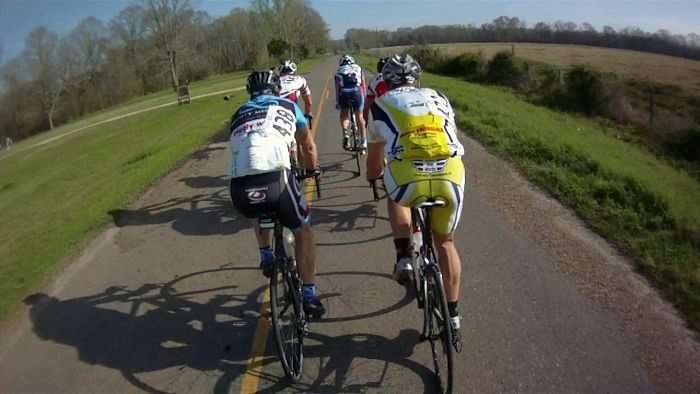
- More on rotating pacelines – There really isn’t “any time at the front” – that is the only time to switch lines. In a good paceline, it is much like a circle. You are only moving up or back in protected air, then laterally in unprotected air. There is only a tiny amount of time between when that person ahead of you moves laterally, and you clear their wheel before you start moving laterally. In the slow line you spend a little time in unprotected air too, but you are slowing down, so no big deal… it’s only in dodgy rotations when things aren’t smooth that you may spend so much time “on the front”.
- Echelon riding is a paceline ridden into a crosswind. Rather than a straight line, riders will draft at an angle relative to the wind. An echelon works for single or rotating style pacelines. In either case, the rider at the head of the line will pull off the front and into the wind. The big negative with echolon riding is having enough physical space across the road for all of the riders to draft. Depending on wind direction and on what side of the road your locale rides / drives, drifting across into the other lane and oncoming vehicular traffic is a big no no. By the same token, running out of space and riding in the gutter isn’t a whole lot of fun, particularly if you are the fourth of fifth rider in the gutter simply because there is no more physical room on the road. Riders finding themselves in this situation are receiving no draft from the echelon. If the group of cyclists is big enough, a second echelon of riders can form behind the first.
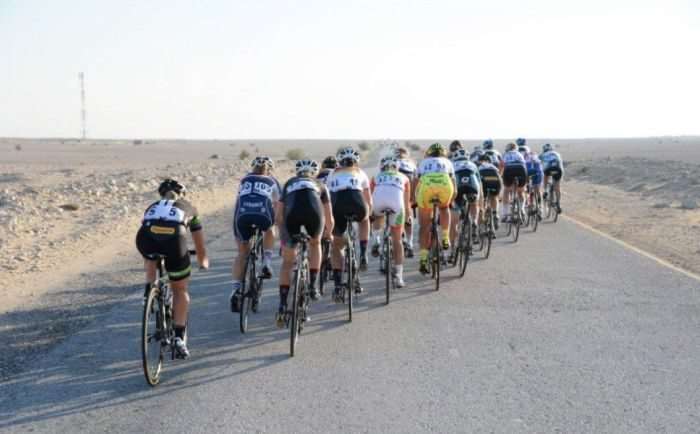
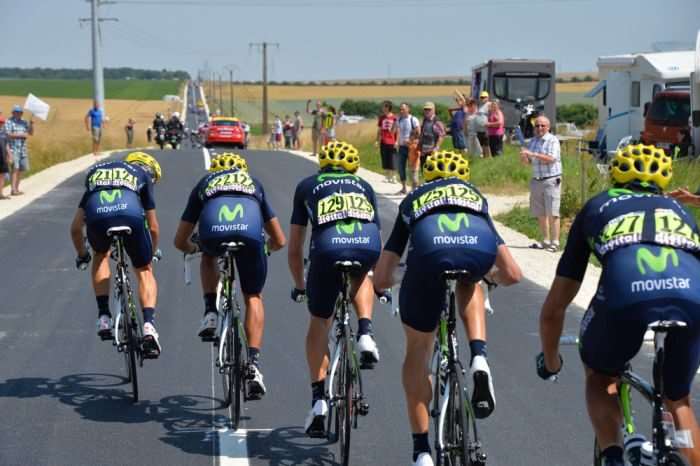
- More on echelons – In a good rotation, wheel overlap, especially in echelons, should happen. It should happen in a smooth, safe rotating paceline too, at the ends of each line. However, this rule of thumb is only for riders with a lot of paceline experience and is not recommended for new or inexperienced riders.
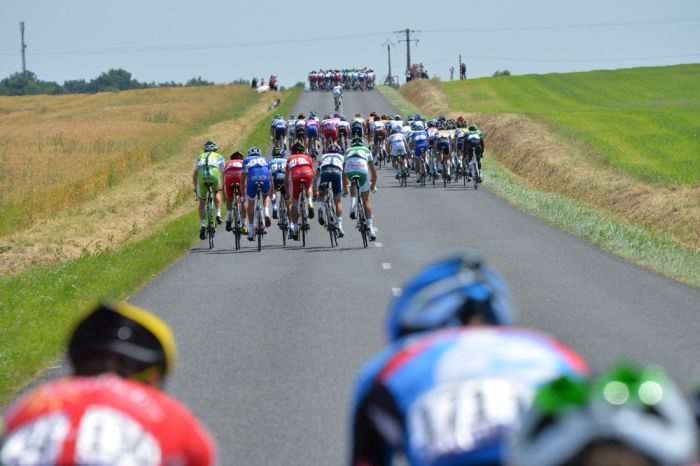
Paceline Etiquette
In all types of pacelines, the following etiquette should apply:
- No surging! Maintain the same speed or level of effort of the rider who just completed their turn. There is nothing more frustrating to finish a turn at the head of any paceline, and then have the following rider increase the speed by one to two miles / km/hr. Remember, working at the front of any paceline takes more effort than remaining in the draft. Don’t be that guy to take a rider off the back after he’s dragged you around for five miles in a single paceline! He / she will appreciate you taking their recovery into consideration.
- Communicate! Point or call out objects and entities such as dogs, potholes, gnarly gravel, cattle grids or any object that may pose a risk to you and the group.
- Single paceline – Don’t impress the group by staying at the front of the line for miles and miles. Eventually you will crack… this comes from experience on local training rides 🙂 If you’re racing, ride smart, meter your effort.
- Rotating paceline – Keep the turns short, about 15 seconds at maximum. If there are only four people working in the rotating paceline, increase the length of turns to about 30 seconds. Keep pedaling when you change your line. Stopping altogether will cause an accordion effect, just like hitting the brakes.
- Keep it smooth! Ride safely and predictably. Don’t make sudden movements.
- Brake cautiously. Hard braking in a paceline of any kind is a big no no.
- Don’t focus on the tyre or rear wheel of the rider directly ahead of you. Look ahead, and see what riders in the paceline may be reacting to.
- Don’t overlap wheels unless the last paragraph of Pacelines applies to you (those with a lot of experience). Should wheels touch, the person overlapping is usually the one who hits the deck. Ouch.
- Don’t be that guy who wheel sucks all day, only to sprint at the finish. If you’re genuinely unable to help pull through in a race, at least communicate your intentions to sit on and stay out of the way. Gravel racing is fun and laid back – we don’t take it as seriously as road racing – but it ain’t cool to play roadie tactics. 90% of us are there to challenge ourselves, and you’ll earn the respect of your fellow gravel cyclists. Remember, a lot of gravel cyclist types are experienced roadies and know how to deal with wheel suckers. Moves such as “taking out the rubbish”, “cracking the whip” or “taking him off the back” can deal with the offender.
- Echelon wheel sucking is especially frowned upon. However, there is a technique known as the Belgian Echelon to deal with the offender. The leading rider will deliberately place himself into the gutter or close to, so that the offending wheel sucker cannot echelon to get a draft. Note, the Belgian Echelon isn’t conducive to making friends. Check out the complete Gravel Cyclist Dictionary HERE!
- Feeding – Play it safe wait until you’re at the back of a paceline to eat. If you’re in a rotating paceline, sit out a couple of turns.
- Aero bars have no place in any paceline.
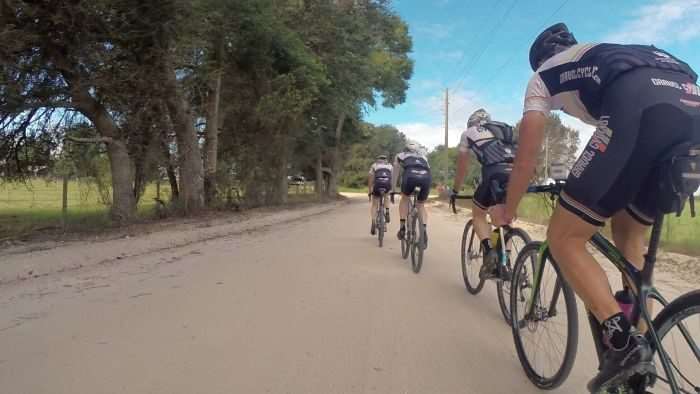
Climbing and Descending
- If you stand out of the saddle while climbing, do it in a smooth and predictable manner. Don’t stop and freewheel for a split second – the bike will shoot backwards towards the rider behind you, risking a touch of wheels. Rather, stand and keep steady pressure on the pedals as you move through the standing motion. Remember, standing while climbing takes more effort than seated climbing. Marginal gains add up over a 200 mile race such as Dirty Kanza.
- Maintain the same effort. Unless you’re vying for overall victory or an age group win, nobody is going to be impressed by you gapping everyone on a climb.
- Unless you have insider tribal knowledge, control your speed and use your brakes appropriately on a descent. Never drag brakes, rather, feather them on and off. Always start a braking run with your rear brake first, then introduce the front brake to further help scrub off speed. Descending with a group of riders, allow a safe gap between riders to open.
Relax!
Riding dirt and gravel roads is challenging at the best of times. Maintaining a tense posture wastes energy that can be used for pedaling. Relax and allow the bike to float beneath you. Resting one’s hands on the top of the handlebars is a relaxing way to traverse bumpy ground for some riders.
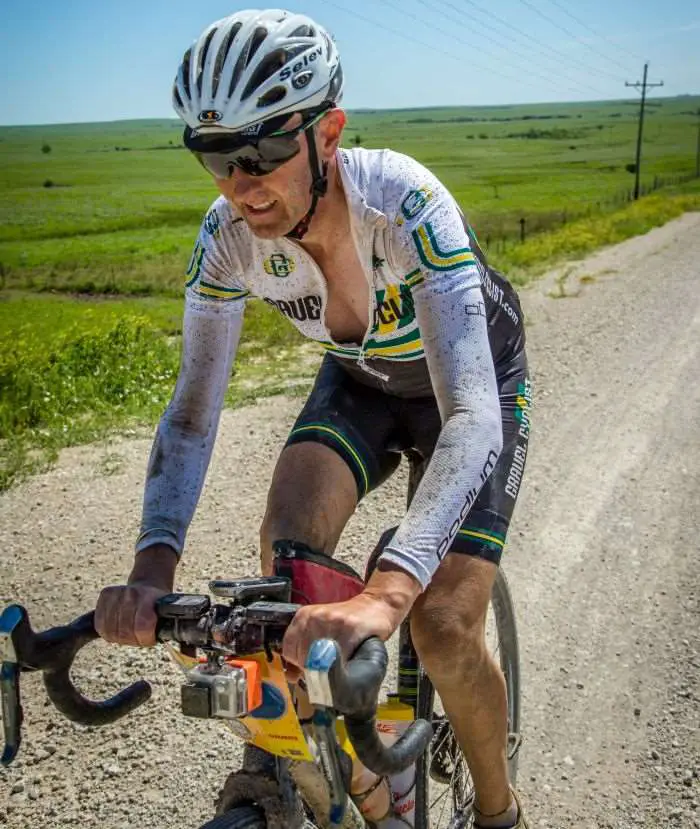
Finally, if you find yourself in the company of JOM or K-Dogg of the Gravel Cyclist crew, it is totally fine to allow them to sit on the back of a group  They’re milking media privilege and are there to make you look good in the race video! Did we mention we don’t take this stuff too seriously?
They’re milking media privilege and are there to make you look good in the race video! Did we mention we don’t take this stuff too seriously?
